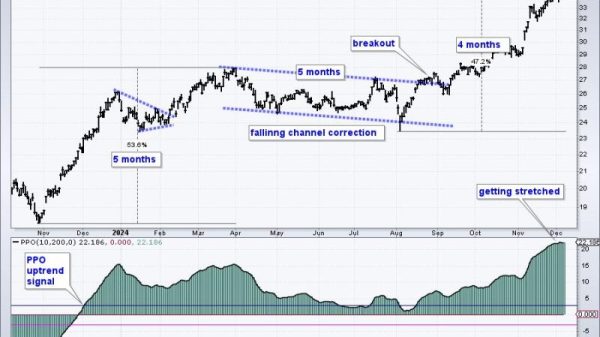The S&P 500 Going Sideways: A Strategic and Stable Path Forward
Investors and analysts often closely monitor the movements of major stock market indices, such as the S&P 500, in order to gauge the overall health and direction of the market. While dramatic fluctuations in the index may grab headlines, a period of sideways trading may actually be a favorable scenario for investors and the broader market. This article explores why the S&P 500 going sideways can be considered the best case scenario.
1. **Stability and Consolidation**
When the S&P 500 goes sideways, it indicates a period of stability and consolidation in the market. This can be beneficial for investors as it allows for a breather after periods of intense volatility. Sideways movement typically reflects a balance between buyers and sellers, with neither group exerting strong control over the direction of the market. As a result, investors can have more confidence in their investment decisions during these times, as the market is less likely to swing wildly in one direction.
2. **Opportunities for Long-Term Investors**
For long-term investors, a sideways market can present attractive opportunities. During periods of sideways trading, stock prices may not be inflated, offering investors the chance to buy quality stocks at more reasonable valuations. Additionally, investors can use this time to reevaluate their investment strategies, reallocate assets, and build positions in companies with strong fundamentals that may have been overlooked during times of market exuberance.
3. **Reduced Risk of Overvaluation**
One of the risks associated with a rapidly rising market is the potential for overvaluation. When stock prices climb too quickly, driven by excessive investor enthusiasm or speculation, it can lead to a bubble that eventually bursts, causing significant losses for investors. In contrast, a sideways market helps prevent excessive valuations by tempering enthusiasm and encouraging a more rational approach to investing.
4. **Healthy Correction and Realignment**
A sideways market can also serve as a healthy correction mechanism for the overall market. Instead of experiencing sharp drops or steep climbs, a period of sideways trading allows stocks to adjust gradually, realigning valuations with underlying fundamentals. This process helps to avoid abrupt market corrections that can trigger panic selling and destabilize the market.
5. **Preparation for Future Growth**
Lastly, a sideways market can be seen as a period of preparation for future growth. By taking a breather and consolidating gains, the market sets the stage for a more sustainable and enduring uptrend in the future. Investors who remain patient and disciplined during these times can position themselves to benefit from the next phase of market expansion.
In conclusion, while a sideways market may not generate the same level of excitement as a rapid bull run, it offers its own set of advantages for investors. By providing stability, creating opportunities for long-term investment, reducing the risk of overvaluation, facilitating healthy corrections, and preparing the market for future growth, the S&P 500 going sideways can indeed be considered the best case scenario for investors seeking stability and sustainable returns in the long run.


























